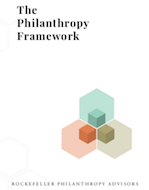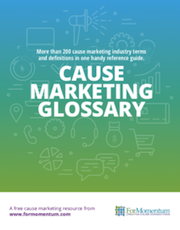All Funders

Rockefeller Philanthropy Advisors has released The Philanthropy Framework, a tool for analysis and planning to guide emerging and established philanthropies to better align resources for maximum impact.

This handy reference tool contains the definitions for over 250 cause marketing industry terms used by savvy businesses and nonprofit organizations.
This report details how funders can embrace the power of young people to advance healthier and safer communities.
Researched and written in collaboration with GEO, this toolkit provides a fresh set of resources for grantmaker CEOs, evaluation staff, and senior leaders to use to engage their boards and trustees in conversations about the importance of strategic learning in their decision-making and deliberation processes.
Please show your support of CNJG by displaying the following "Proud Member" graphic on your website, in social media posts, on publications, and in other communication efforts as appropriate.
This paper discusses developments in the conception and assessment of Creative Placemaking initiatives and, more generally, the assessment of comprehensive community-development strategies.
CNJG's 2018 Annual Meeting & Holiday Luncheon pre-meeting workshop with Michelle Greanias from PEAK Grantmaking focused on how foundation CEO’s, program officers, staff, and trustees could engage internally to put values-based grantmaking into practice.
Assessing the performance of a foundation is notoriously challenging, but it is crucial to learning and improvement.
The Center for Disaster Philanthropy is proud to partner with Foundation Center, the leading source of information about philanthropy worldwide, to present this interactive dashboard, which provides an analysis of disaster-related funding by foundations, governments, corporations, and individuals.
The Center for Effective Philanthropy (CEP) collected candid, anonymous feedback over 15 years from more than 100,000 nonprofit leaders to produce this report detailing five things that nonprofits want their donors to know but may not be telling them directly.
